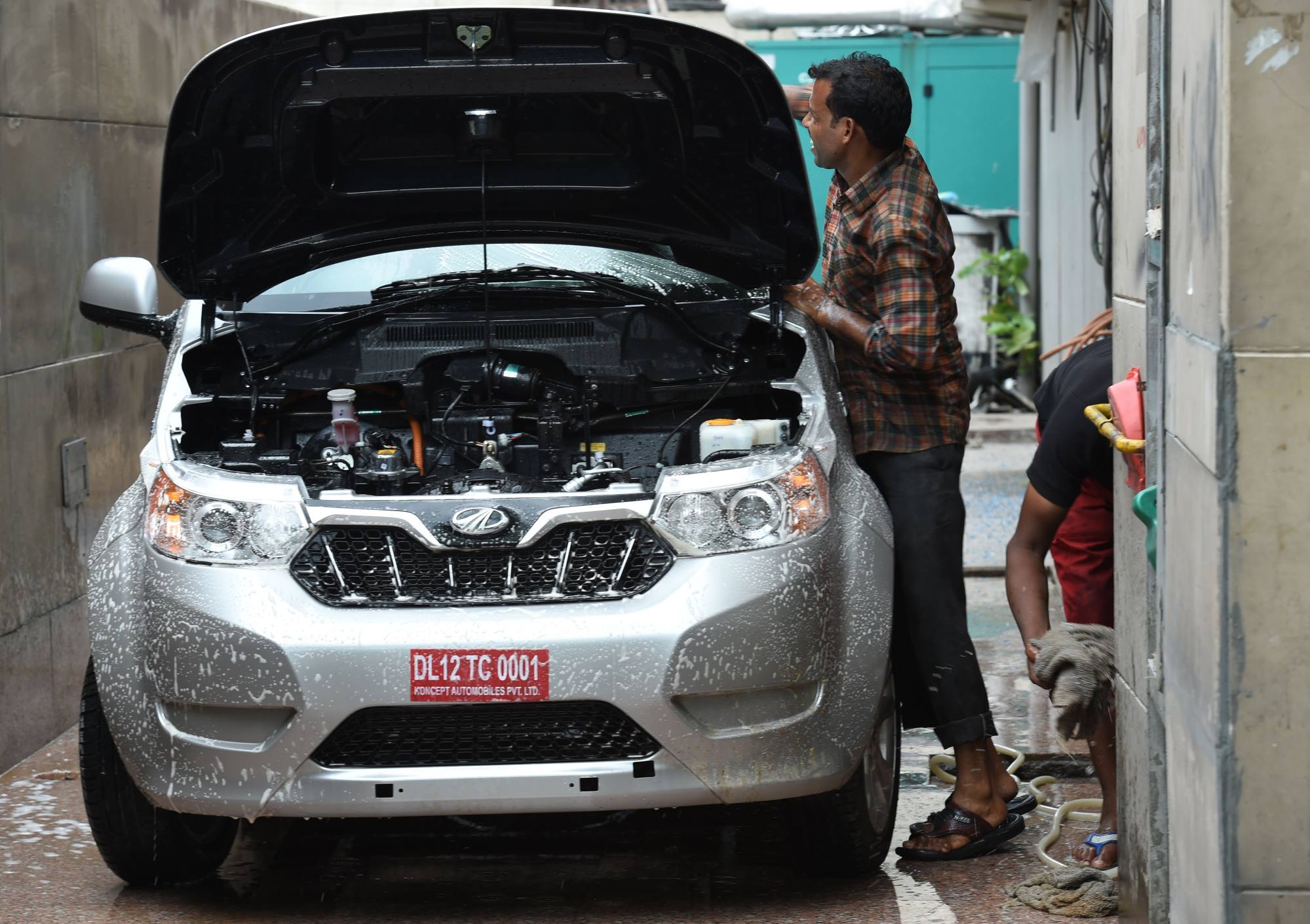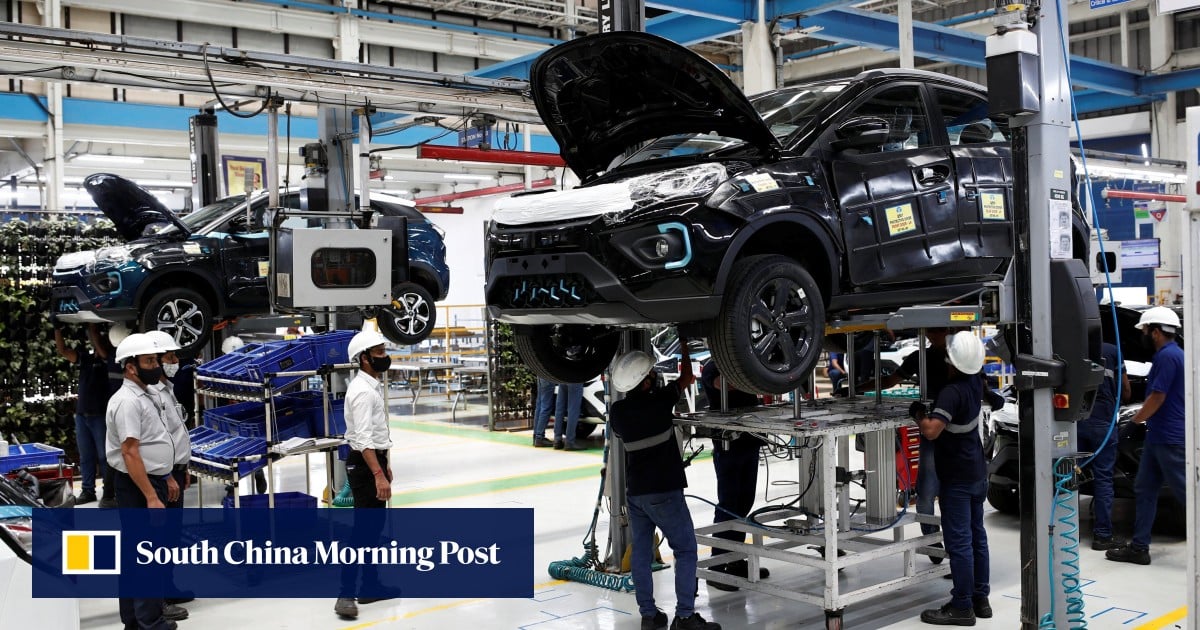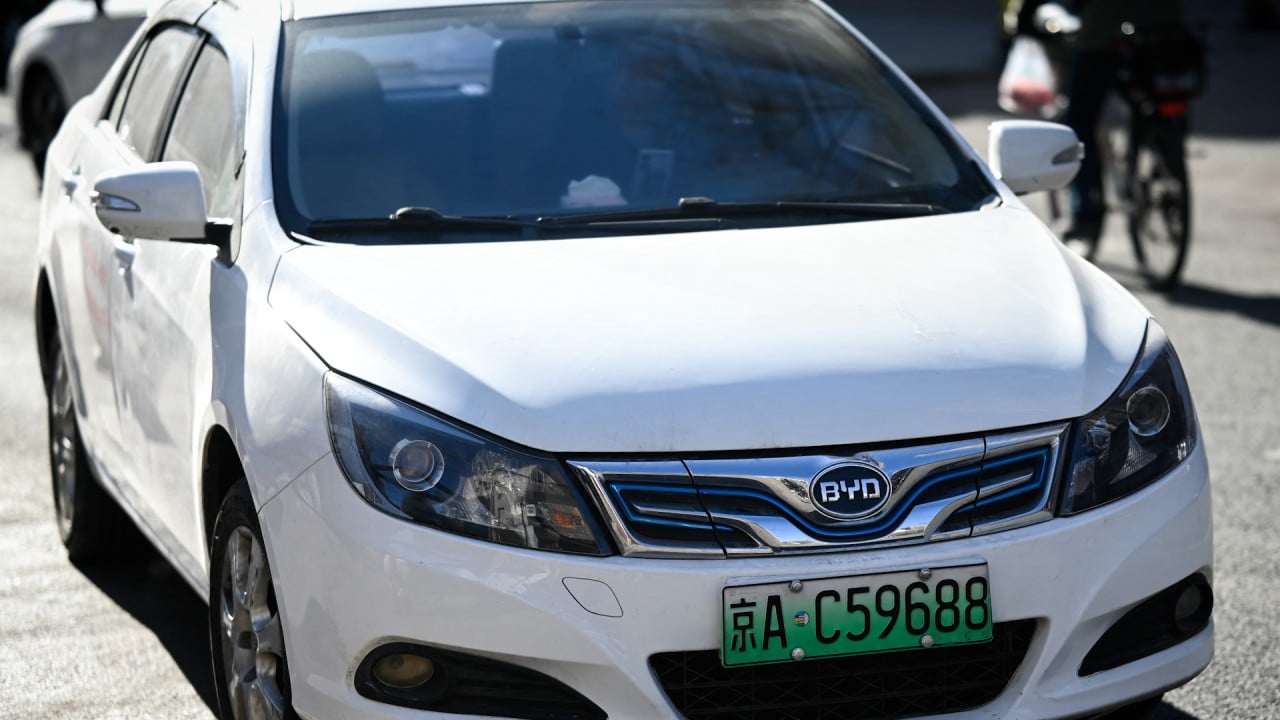Electric car penetration, which trails two- and three-wheelers, is likely to hit about 15-20 per cent, says Mihir Pant, a Mumbai-based partner at Bain & Co.
Unlike other markets where EV sales have slowed, India’s appears poised to take off.
“India is late in terms of penetration levels [of EVs], but now we can say that the ball has started rolling,” said Puneet Gupta, director of mobility at S&P Global.
India has expanded a production-linked incentive (PLI) programme for the manufacture of EVs, which includes tax breaks, cheaper rentals and discounted electricity charges that are tied to production volume and greater localisation.
Nearly all Indian carmakers import solar cells, a key component in batteries, which account for most of an EV’s cost.
Will Indian carmaker Maruti Suzuki’s electric push be too little, too late?
Will Indian carmaker Maruti Suzuki’s electric push be too little, too late?
Besides a plunge in battery prices and sluggish global sales, Gupta said Indian manufacturers were rolling out discounts in anticipation of PLIs and more local manufacturing, providing ammunition for EVs to start to challenge traditional cars with internal combustion engines.
Ola Electric last month became India’s first e-scooter company to qualify for the government’s PLIs. The Tata group and Mahindra have also secured PLI approval for one EV model each.
Tata Motors, which accounts for around 70 per cent of EVs in India, cut the prices of its electric vehicles by 1-8 per cent on February 13, offering discounts of up to US$1,450 in what was a first for an Indian carmaker.
Other EV makers are likely to follow Tata’s move eventually, though most are still developing their own models.

The impact of the price move has percolated to other segments.
India’s largest two-wheeler EV maker, Ola Electric, was seeking to raise 55 billion rupees (US$663 million) with an initial public offering in the same week that it announced US$300 price cuts on three models – the Pro, S1 Air and S1 X.
Ola Electric’s sales jumped by thousands of units following the price cuts, according to local media reports.
Much ado about Tesla
EV adoption in India has been held back by the high cost of cars, a dearth of models and lack of charging options. But the market is seeing a ray of hope because of falling prices of lithium, an essential component of electric engines.
Lithium prices soared to record highs in the two years to 2022 in anticipation of brisk EV demand. However, prices fell by over 80 per cent within a year because of rapid lithium output expansion and weak battery demand.
EV boom unlikely to ease Asia’s resource vulnerability, analysts warn
EV boom unlikely to ease Asia’s resource vulnerability, analysts warn
Production-linked incentives and a subsidy programme on EVs are expected to reduce the price gap between EVs and conventional vehicles that run on internal combustion engines by 15-20 per cent, S&P’s Gupta said.
That should mean most EVs cost 1 million-1.5 million rupees in the coming years.
Tata’s popular Nexon EV model sells for around 1.5 million rupees, falling within the category of a compact SUV that can accommodate five people.
Around half of the cars sold in India last year were priced at 1 million rupees (US$12,000) or less, and another significant chunk are within the bracket of 1 million to 2 million rupees, according to Bain & Co’s Pant.
“There is going to be a need for development of products or platforms that meet these price points,” he said.
There is market talk that Tesla may introduce a model for around US$25,000 (2 million rupees), though its initial models could cost double that amount because they are expected to be imported.
New Delhi levies an import duty of 100 per cent on vehicles that cost more than US$40,000 and most of Tesla’s models are priced higher. The Austin-based firm has been lobbying the Indian government for over two years to lower its duties.
The Indian government is reportedly considering allowing international car manufacturers to import battery-powered vehicles at duty rates as low as 15 per cent if they commit to assembling the vehicles in India.
But analysts say Delhi is likely to set a high minimum price on the importation of completed vehicles, to ease concerns the market will be flooded with imports.
“Even after the concessionary import duty, which is in discussion, to create a meaningful place in the market, Tesla will have to set up a manufacturing plant in India,” said Ashish Bagadia, a corporate finance and investment banking partner at BDO India.
Some industry executives are concerned the government might lure Tesla with more incentives because it is a global brand, putting them at a disadvantage, but Bagadia said all manufacturers would be on a level playing field.
Product quality, network and brand “will determine the winners”, he said.
India will need sustained policy support, such as clear norms and tax breaks for establishing fast-charging infrastructure, to enable localisation, bring down costs and drive EV adoption, says the Bain report. “A supportive legal and policy framework will play a significant role – cutting across multiple legislation and ministries governing various aspects of zero-emission vehicles,” said Amit Kapur, joint managing partner at JSA Advocates & Solicitors.
Indonesia still keen to court Elon Musk, ‘not worried’ by Tesla’s Malaysia base
Indonesia still keen to court Elon Musk, ‘not worried’ by Tesla’s Malaysia base
Miles to go
Several issues cloud the potential for the industry’s growth, including an expected end this year to the Indian government’s Faster Adoption and Manufacturing of Electric Vehicles subsidy programme, after it was excluded from last month’s federal budget.
Because the budget was an interim one, market participants are keeping their fingers crossed for a change in view of national elections in April and the potential for a new programme that may be announced later this year.
India will need to cross several key milestones before it achieves its potential US$100 billion annual revenue mark, according to Bain.
These include companies developing products suited to Indian consumers, building distribution channels, focusing on equipping businesses like ride-hailing services with new fleets and scaling up charging infrastructure.

With the total cost of EV ownership now on a par with that of cars with conventional engines, Pant notes that battery costs are likely to drop further and different segments of EVs may become as affordable as fossil fuel vehicles, although time periods would vary.
Manufacturers will also need to address consumers’ concerns regarding safety and resale value as vehicles age, Pant added.
India’s push towards building an EV ecosystem through production incentives could be visible within five years, but building a battery segment locally is only likely to occur over a longer period, according to Thirumalai NC, sector head at the Strategic Studies at Center for Study of Science, Technology & Policy.
The stakes are high for ushering in an EV revolution in India and go far beyond revenue potential for the automotive industry.
According to the International Energy Agency, India is projected to be the largest contributor of global oil demand growth within the next seven years, with around 85 per cent of its oil requirements being currently imported.
“Indian players can take advantage of battery and lithium costs coming down worldwide,” said Vinnie Mehta, director general of Automotive Component Manufacturers Association of India. Car makers had already started “advancing towards localisation of the supply chain”, he said.
.


